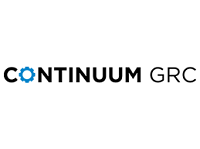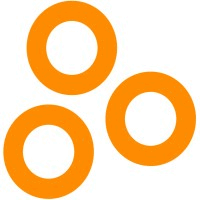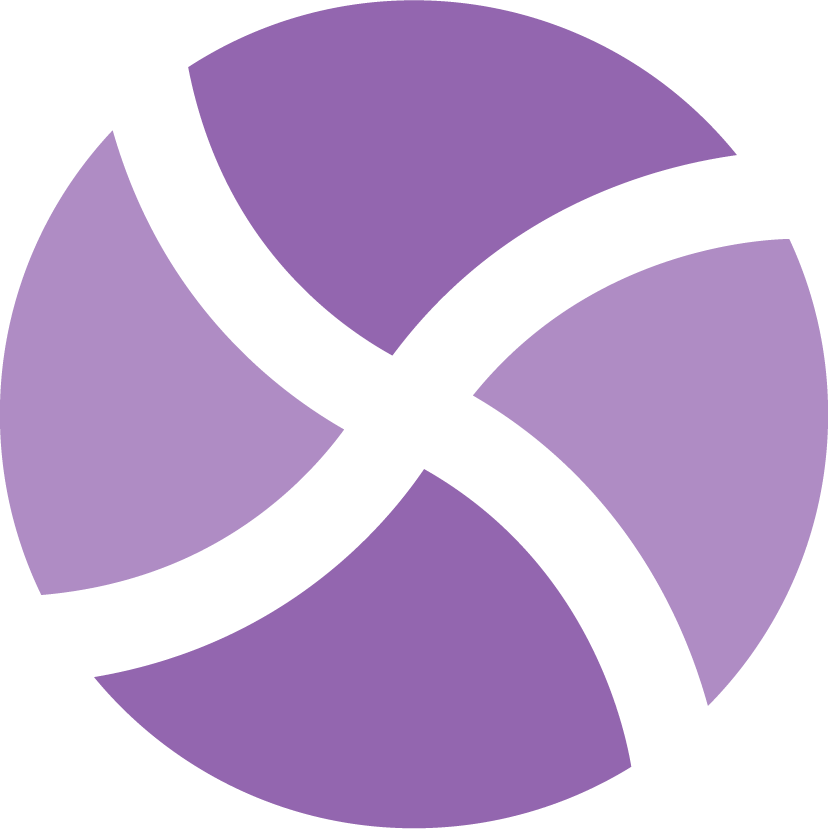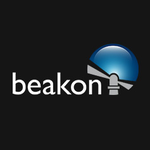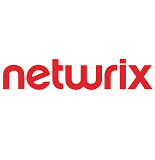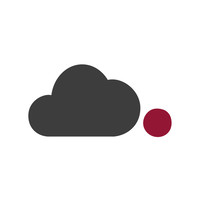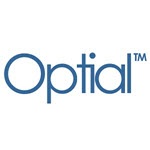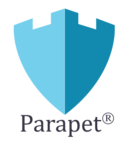What Is GRC Software?
Governance, Risk, and Compliance (GRC) software is a potent digital tool that helps businesses manage intricate business processes and guarantee adherence to internal policies, laws, and regulations. It is a complete solution that unifies several procedures into a single platform, including regulatory compliance, internal control management, policy management, and risk assessment.
By automating laborious procedures and giving real-time insights into an organization's overall risk posture, GRC software provides a simplified method of managing risks and compliance. It guarantees that an organization's actions comply with industry and legal standards and assists in identifying, evaluating, and mitigating possible risks.
The capacity of GRC software to centralise data and offer a comprehensive picture of an organization's risk and compliance initiatives is one of its primary characteristics. Better decision-making and more effective risk management techniques are made possible by this. Additionally, it makes it possible for various departments and stakeholders to work together, promoting smooth communication and information exchange.
Apart from managing risk and compliance, GRC software assists companies in streamlining audits, keeping an eye on policy compliance, and producing reports for regulatory bodies. To monitor important performance metrics and spot possible areas for development, it offers customisable dashboards and reporting capabilities. With so many options on the market, choosing the best GRC software for your company can be difficult.
To determine which GRC software solution best suits the unique requirements of your company, it is critical to compare features, customisation possibilities, cost, and customer support. All things considered, GRC software is a vital resource for any company trying to enhance its compliance and risk management procedures. It guarantees that an organisation functions morally, effectively, and in accordance with rules and industry standards in addition to assisting in risk mitigation.
What Are The Recent Trends In GRC Software?
Significant technological improvements in recent years have resulted in a business environment that is more complex and constantly changing. Organisations must have an efficient Governance, Risk, and Compliance (GRC) program in place since they must deal with a variety of risks and regulatory compliance obligations. GRC software has emerged as a crucial instrument for companies of all sizes to address these issues. GRC software is a complete solution that aids businesses in risk management, compliance, and upholding sound governance procedures. In order to make wise purchasing selections, consumers must keep up with the most recent trends in the GRC software market, which is still expanding.
Buyers of GRC software should be aware of the following current trends:
1. Integration Of Artificial Intelligence (AI) And Machine Learning (ML): These technologies are increasingly being used in GRC software because they make risk assessment and compliance monitoring procedures more accurate and efficient. Large volumes of data can be analysed in real time by these technologies, which can also spot patterns and trends and offer insightful information that helps businesses make better decisions.
2. Improved Integration Capabilities: GRC software is currently being developed with improved integration features, which enable it to easily interface with various tools and systems within a company. By removing silos and fostering a more effective and efficient GRC program, this integration allows for a more comprehensive picture of risk and compliance throughout the company.
3. Emphasis On User-Friendly Interfaces: GRC software has developed user-friendly interfaces for simpler usage and navigation as a result of the growing complexity of risk and compliance requirements. A wider spectrum of individuals may now access GRC software thanks to this trend, which improves communication and collaboration inside businesses.
4. Cloud-Based Solutions: Because of its affordability, scalability, and flexibility, cloud-based GRC software is becoming more and more popular. The ability to access these solutions at any time and from any location facilitates risk and compliance management for remote teams. Additionally, cloud-based GRC software lowers expenses for businesses by requiring less IT infrastructure and maintenance.
5. Automation Of Manual Tasks: Risk and compliance management manual tasks can be laborious, time-consuming, and prone to human mistake. To increase efficiency and accuracy, GRC software is now integrating automation features including risk assessment, compliance reporting, and automated data collecting and analysis.
Benefits of Using GRC Software
For companies of all sizes and sectors, GRC (Governance, Risk, and Compliance) software is a vital resource. Organisations may increase productivity, cut expenses, and improve decision-making by using this software to automate and streamline their governance, risk management, and compliance procedures.
The main advantages of utilising GRC software and how it can help your company will be covered in this buyer's guide.
1. Centralised: Administration of Risk, Governance, and Compliance Tasks The fact that GRC software offers a centralised platform for handling all governance, risk, and compliance-related tasks is one of its main advantages. It makes it simpler to keep an eye on compliance and spot possible hazards by enabling organisations to store, arrange, and monitor policies, procedures, and laws in one location. Better departmental coordination and a more comprehensive approach to GRC are also made possible by this feature.
2. Enhanced: Productivity and Efficiency Spreadsheets, emails, and paper-based systems are no longer necessary thanks to GRC software, which automates a lot of manual tasks. Your team may concentrate on other important activities since this frees up vital time and resources. Your company's productivity and efficiency can be greatly increased with GRC software's automated risk assessments and optimised processes.
3. Improved Risk Control: GRC software aids in the proactive identification, evaluation, and mitigation of risks. The software analyses possible risks and vulnerabilities using data-driven insights, giving stakeholders real-time alerts and notifications. This makes it possible for businesses to act quickly and reduce the negative effects of risks on their operations, finances, and reputation.
4. Enhanced Adherence: The standards for compliance are always changing and become more complicated. Organisations may guarantee compliance across all processes and stay current with the most recent legislation by using GRC software. Additionally, the program creates audit trails and reports, which facilitates the process of proving compliance to auditors and regulators.
5. Enhanced Decision-Making: GRC software gives businesses a thorough understanding of their risk and compliance environment. This facilitates better, data-driven decision-making by leaders and decision-makers. Organisations can evaluate the success of their GRC policies, spot patterns and trends, and make necessary adjustments thanks to the software's reporting and analytics features.
Important Factors To Consider While Purchasing GRC Software?
Overview: The need for governance, risk, and compliance (GRC) software has increased dramatically as companies struggle more and more to manage GRC in the constantly shifting regulatory environment of today. Organisations may guarantee compliance, reduce risks, and make well-informed strategic decisions by using GRC software, which automates and simplifies the management of GRC procedures. Nevertheless, consumers may find it difficult to select the best GRC software for their requirements due to the abundance of solutions on the market. In order to make an informed choice, it is necessary to take into account a few things while buying GRC software.
1. Functionality And Features: When buying GRC software, functionality and features should be the primary consideration. The unique compliance, risk, and governance needs of your company should be met by GRC software. Workflow management, process automation, and real-time reporting and analytics should all be under its purview. To guarantee data security, it should also contain functions like document management, data encryption, audit trails, and access control.
2. Scalability: The scalability of the system is an important factor to take into account while selecting GRC software. Your company's compliance and risk management requirements will expand along with it. As a result, the software ought ideally grow with your company and adapt to your future needs without causing any major adjustments or interruptions.
3. Integration Capabilities: Supply chain, IT, finance, and other corporate functions are all linked to GRC procedures. As a result, making ensuring the GRC software can easily interface with other programs and systems within your company is essential. Data exchange, process simplification, and effort duplication will all benefit from this.
4. User-Friendliness: From front-line personnel to upper management, GRC software should be simple to use and navigate for all staff levels. To meet the demands of many users, it should provide dashboards that can be customised, an intuitive user interface, and customised workflows. This will guarantee that all parties involved embrace and use the program efficiently.
5. Assistance And Training: Verify that the vendor offers sufficient customer assistance and training before to choosing a GRC program. Your staff may need technical support and training for the software uptake and deployment. To get the most out of your investment, you must have access to thorough training materials and prompt support.
6. Reputation And Client Reviews: It is crucial to read customer reviews and investigate the GRC software vendor's reputation before deciding to buy. This will provide you with information about how other organisations have used the product and the customer support provided by the vendor. It will also assist in assessing whether the program performs and functions as promised.
7. Security And Compliance: Because GRC software handles sensitive data, it is essential to make sure that it complies with security standards and industry rules. To protect the data of your company, it should have strong access controls and data encryption. The vendor should also regularly release fixes and upgrades to fix any security flaws.
What Are The Key Features To Look For In GRC Software?
To make the best choice possible, there are a few essential features to consider when thinking about investing in GRC (Governance, Risk, and Compliance) software for your company. These characteristics are necessary to maintain compliance, manage and reduce risk, and build solid governance procedures in your business.
1. Integration Capabilities: The software's integration capabilities should be taken into account first. Selecting GRC software that works well with your current databases and systems is essential. This saves time and lowers the possibility of errors by ensuring a seamless transfer to the new program and doing away with the necessity for duplicate data entering.
2. Customisation: Every company has different risk management and compliance requirements. Choose a GRC program that allows for customisation so you may modify it to suit your unique requirements. This enables you to design a customised solution that complements the objectives and procedures of your business.
3. Centralised Dashboard: A centralised dashboard is an effective tool that lets you keep an eye on and manage every facet of your company's risk and compliance initiatives in one location. It gives you a thorough picture of your company's performance in real time, enabling you to make data-driven decisions.
4. Automation: Risk assessments, compliance audits, and policy management are just a few of the jobs and procedures that GRC software need to automate. This lowers the possibility of human error, saves time, and streamlines your processes. To boost productivity, look for software with sophisticated automation features.
5. Reporting And Analytics: Two crucial elements to search for in GRC software are reporting and analytics. They enable you to provide comprehensive reports and analytics on the governance, risk, and compliance operations of your company. This makes it simpler to verify compliance to stakeholders and regulatory agencies by assisting you in identifying gaps, trends, and possible areas for improvement.
6. Collaborative Tools: Teams and departments within an organisation must work together to manage GRC effectively. To promote communication and teamwork, look for software that provides collaborative features like task assignments and shared document libraries.
7. Security Features: Because GRC software handles sensitive data, security is essential. To safeguard the data of your company, make sure the software has strong security features including data encryption, role-based access control, and frequent backups.
8. Scalability: Your GRC software should adapt to the changing needs of your company. Select software that is scalable so it can expand with your company. By doing this, you will avoid the trouble and expense of later having to move to a new system.
Why Do Businesses Need GRC Software?
To oversee and manage their operations and guarantee adherence to several regulations, businesses use GRC (Governance, Risk, and Compliance) software. Companies are coming under more and more scrutiny from stakeholders and regulatory agencies in the ever-changing business environment of today. Therefore, preserving the integrity of business processes and safeguarding the company's reputation depend heavily on having a strong GRC software in place.
Simplifying governance, risk, and compliance initiatives is one of the primary reasons companies want GRC software. Businesses may boost efficiency by saving time and money by tracking and managing all of these factors on a single platform. Furthermore, GRC software can assist businesses in recognising and resolving possible risks before they become significant problems, sparing them from expensive outcomes.
Additionally, GRC software can help companies stay in compliance with industry standards and pertinent laws. Businesses are under tremendous pressure to remain compliant and stay out of trouble due to the growing number of data privacy laws and customer needs. Businesses can stay current on these standards and make sure they are meeting compliance obligations with the use of GRC software.
The capacity of GRC software to enhance accountability and decision-making is another important advantage. Businesses can have a thorough understanding of their operations and possible dangers when they have a centralised system in place. It makes it possible to make decisions more quickly and intelligently, guaranteeing that the aims and objectives of the business are in line with the regulations.
Additionally, GRC software can assist companies in stopping unethical and fraudulent activity. Businesses can identify abnormalities and odd trends in their operations and take preventative action to reduce risks by implementing a strong control system.
How Much Time Is Required To Implement GRC Software?
For GRC (Governance, Risk, and Compliance) software to be successfully adopted within an organisation, implementation calls for a careful and calculated strategy. The size and complexity of the organisation, the GRC software selected, and the resources available for the implementation are some of the variables that affect how long an implementation takes.
The implementation procedure often takes a few weeks to many months to complete. In order to find any gaps or places for development, it is first and foremost crucial to carry out a comprehensive evaluation of the organization's current procedures and practices. Depending on the organization's size and resource availability, this evaluation may take a few weeks to a month.
Next, the right GRC software must be chosen. Contract negotiations, gaining support from important stakeholders, and assessing various software solutions can all be part of this process. This can take a few weeks to a few months, depending on how the organisation makes decisions. Configuring the GRC software to match the organization's requirements and procedures is usually the first step in the implementation process, which starts after the software has been chosen.
Depending on the organization's technological capability and the complexity of the program, this process may take a few weeks to several months. The process of educating and onboarding users starts as soon as the program is configured. This stage is essential to ensuring that users comprehend the software and know how to utilise it efficiently.
The size of the company and the number of users might affect how long training and onboarding take. Finally, to handle any problems or difficulties that might come up during the early phases of using the GRC software, there is frequently a post-implementation review and adjustment phase. Depending on the objectives of the company and the software's complexity, this stage may take a few weeks to several months.
All things considered, it is critical to keep in mind that the GRC software implementation procedure necessitates time and work to guarantee its successful adoption within the company. To ensure a successful and seamless execution, it is essential to have a well defined plan, include important stakeholders, and have the required resources.
What Is The Level Of Customization Available In GRC Software?
Depending on the particular product and supplier, GRC (governance, risk, and compliance) software might have varying degrees of customisation. But generally speaking, GRC software allows for a great deal of customisation to satisfy the particular demands and specifications of every company. The ability to modify workflows, forms, and reports to correspond with the particular procedures and jargon employed within an organisation is a common feature of GRC software customisation options.
This minimises interruption and maximises productivity by enabling a smooth software integration into current systems and procedures. In order to guarantee that every user has access to only the data and features pertinent to their duties and responsibilities, GRC software may also include user roles and permissions that are customisable. This streamlines processes while preserving security and confidentiality.
Code-level customisation may also be possible with some sophisticated GRC software, giving businesses the freedom to design their own modules or features to suit their particular requirements. Examine the degree of customisation choices offered by GRC software and rank the aspects that are most crucial to the particular requirements of your company.I
Which Industries Can Benefit The Most From GRC Software?
GRC software, which stands for Governance, Risk, and Compliance, is a potent instrument that aids businesses in managing and streamlining their associated procedures. Although GRC software can be advantageous to many different businesses, some industries stand to gain the most from its use. We will examine the leading industries that stand to gain the most from the use of GRC software in this buyer's guide.
1. Financial Services Industry: The financial services sector is a perfect fit for GRC software because it is heavily regulated and subject to many risks. Financial firms can guarantee adherence to industry-specific standards like the Payment Card Industry Data Security Standard (PCI DSS) and Sarbanes-Oxley (SOX) and the Dodd-Frank Act by using GRC software. Additionally, GRC software offers centralised risk management, which enables financial organisations to proactively detect and reduce any hazards.
2. Healthcare Sector: Another highly regulated sector that stands to gain a great deal from GRC software is the healthcare sector. Healthcare organisations are always under pressure to adhere to a number of rules, including the Affordable Care Act (ACA) and the Health Insurance Portability and Accountability Act (HIPAA). GRC software assists healthcare organisations in proactively managing risks associated with patient care and safety, streamlining compliance procedures, and protecting data privacy and security.
3. Energy And Utilities Sector: This sector is confronted with escalating safety and environmental standards, in addition to cyber risks. Because of this, GRC software is a useful tool for these organisations to improve safety protocols, lower operational risks, and maintain regulatory compliance. Additionally, GRC software can assist utilities and energy firms in managing supplier relationships and keeping stakeholders informed.
4. Government And Public Sector: Public sector organisations and government agencies manage sensitive data and are bound by stringent rules and guidelines, including the Federal Risk and Authorisation Management Program (FedRAMP) and the Federal Information Security Management Act (FISMA). These businesses may control risks, expedite compliance procedures, and preserve data security and privacy with the help of GRC software.
5. Retail And Consumer Goods Industry: This fiercely competitive sector is vulnerable to supply chain interruptions, fraud, and data breaches. Because GRC software offers real-time monitoring, analysis, and reporting capabilities, it can assist these organisations in reducing these risks. Additionally, GRC software assists merchants in managing adherence to regulations including the General Data Protection Regulation (GDPR) and the Payment Card Industry Data Security Standard (PCI DSS).
Conclusion
To sum up, selecting the appropriate GRC software for your company is essential for efficient risk management and mitigation, regulatory compliance, and governance improvement. Factors including the software's functionality, customisable choices, integrations, cost, and user-friendliness should all be taken into account while assessing possible options.
Additionally, as different GRC software solutions may be better at different things, it is crucial to carefully evaluate the unique objectives and requirements of your company. It can be beneficial to use demonstrations and free trials to get a feel for the product and find the one that works best for your company. To guarantee the software's lifetime and efficacy, we advise choosing a GRC program that provides strong reporting and analytics features in addition to frequent upgrades and support services.
Additionally, when selecting a GRC program, don't undervalue the significance of security and data protection. Seek out systems that include access restrictions, robust encryption, and adherence to industry-specific standards. Last but not least, incorporating important stakeholders and asking current users for input can yield insightful information and facilitate the decision-making process.
You can choose a GRC software solution that fits the particular requirements of your company and positions you for success with confidence if you adhere to these recommendations and take the time to carefully consider your options.




